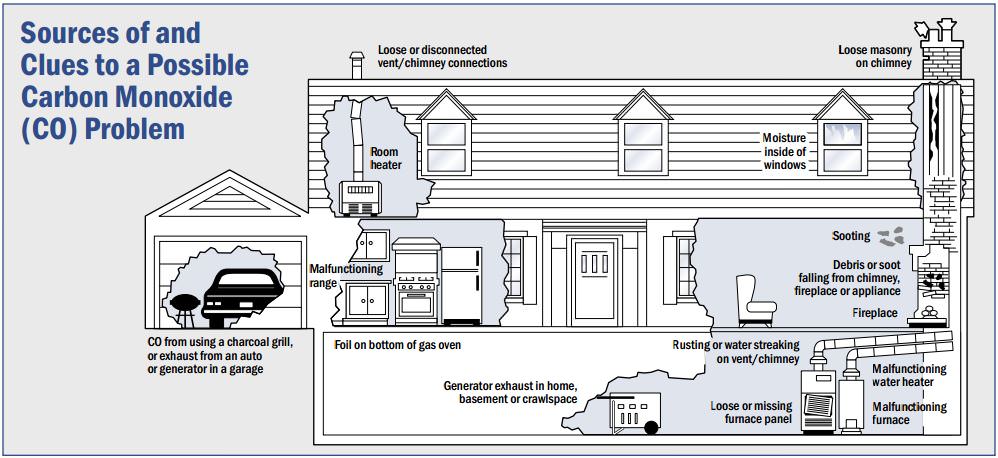With a streak of cold weather now upon us, Heartland Security wants you to know how to prevent carbon monoxide (CO) poisoning, as this silent killer takes more than 430 lives every year, according to the Centers for Disease Control and Prevention (CDC). Though you cannot see or smell carbon monoxide, CO poisoning is entirely preventable.
Almost two-thirds of non-fire related carbon monoxide deaths take place in November, December, January, and February as these are the primary months when consumers crank up their furnaces and portable heaters to stay warm.
Where does carbon monoxide come from?
Carbon monoxide is produced by burning fuel. Therefore, any fuel-burning appliance in your home is a potential CO source. When cooking or heating appliances are kept in good working order, they produce little CO but improperly operating appliances can produce fatal CO concentrations. CO is found in fumes produced by portable generators, stoves, lanterns, and gas ranges, or by burning charcoal and wood. CO from these sources can build up in enclosed or partially enclosed spaces.
CO can also come from running a car or generator in an attached garage. Running a generator or burning charcoal in a basement, crawlspace, or living area of the home can cause fatal CO poisoning in the home.

Ways to Prevent Carbon Monoxide Poisoning
1. Check your chimneys/furnaces
Before using your chimney or turning on the furnace, get chimneys and fuel-burning appliances checked by a professional who services those items to make sure they are working correctly and vented to the outside properly.
2. Use portable generators outside
Never use a portable generator inside your house, garage, basement, crawlspace, shed or in a semi-enclosed space, such as a porch close to the house. Keep generators at least 20 feet away from windows, doors, and vents (as recommended by the CDC).
3. Know the initial symptoms of CO poisoning
The most common symptoms of CO poisoning are headache, dizziness, weakness, fatigue, nausea, vomiting, chest pain, shortness of breath, and confusion. People who are sleeping or who have been drinking alcohol can die from CO poisoning before ever having symptoms.
If you suspect that you are experiencing CO poisoning, get fresh air immediately. Leave the home and call for assistance from outside the home. If you stay in the home, you could lose consciousness and die. Get medical attention immediately and inform medical staff that CO poisoning is suspected. Call the fire department to determine when it is safe to return to the home.
4. Have working carbon monoxide detectors
If you don’t have a carbon monoxide detector, get one. Make sure there is one on every level of your home and outside bedrooms/sleeping areas. NEVER ignore a beeping alarm. If the alarm sounds, go outside and call 911.
If you already have CO alarms, make sure they are working properly. Change the batteries in your CO detector every six months. If you don’t have a battery-powered CO alarm, get a battery back-up CO detector.
Replace CO alarms every 5 years or as recommended by the manufacturer. Newer CO alarms have end of life indicators that beep when the alarm is at the end of its working life and needs to be replaced.
Carbon monoxide alarms should be certified to the requirements of the most recent UL, IAS, or CSA standard for CO alarms. A CO alarm can provide added protection, but is no substitute for proper installation, use and upkeep of appliances that are potential CO sources.
Remember, CO poisoning is entirely preventable! Regularly maintain fuel-burning appliances, and run cars and generators outside of attached garages. Know the symptoms of CO poisoning and keep your CO detectors up-to-date with fresh batteries.
For more information about CO detectors as part of a monitored security system, contact us.
Sources: CPSC – Protect Your Family From Deadly Carbon Monoxide This Winter, CPSC Infographic: Portable Generator-Related Deaths, CPSC – Winter Weather Alert: Generators, CPSC – “The ‘Invisible; Killer” brochure, CDC – Carbon Monoxide (CO) Poisoning Prevention
Updated May 20, 2020
